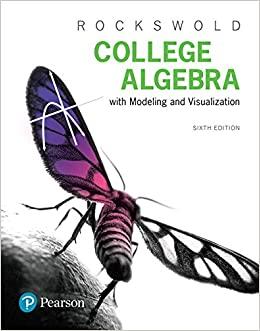In the compound interest formula A = P(1 + r/n) nt , we can think of P
Question:
In the compound interest formula A = P(1 + r/n)nt, we can think of P as the present value of an investment and A as the future value of an investment after t years. For example, if you were saving for college and needed a future value of A dollars, then P would represent the amount needed in an account today to reach your goal in t years at an interest rate of r, compounded in times per year. If we solve the equation for P, it results in![]()
What should the present value of a savings account be to cover $30,000 of college expenses in 12.5 years, if the account pays 7.5% interest compounded quarterly?
Fantastic news! We've Found the answer you've been seeking!
Step by Step Answer:
Related Book For 

College Algebra With Modeling And Visualization
ISBN: 9780134418049
6th Edition
Authors: Gary Rockswold
Question Posted:





